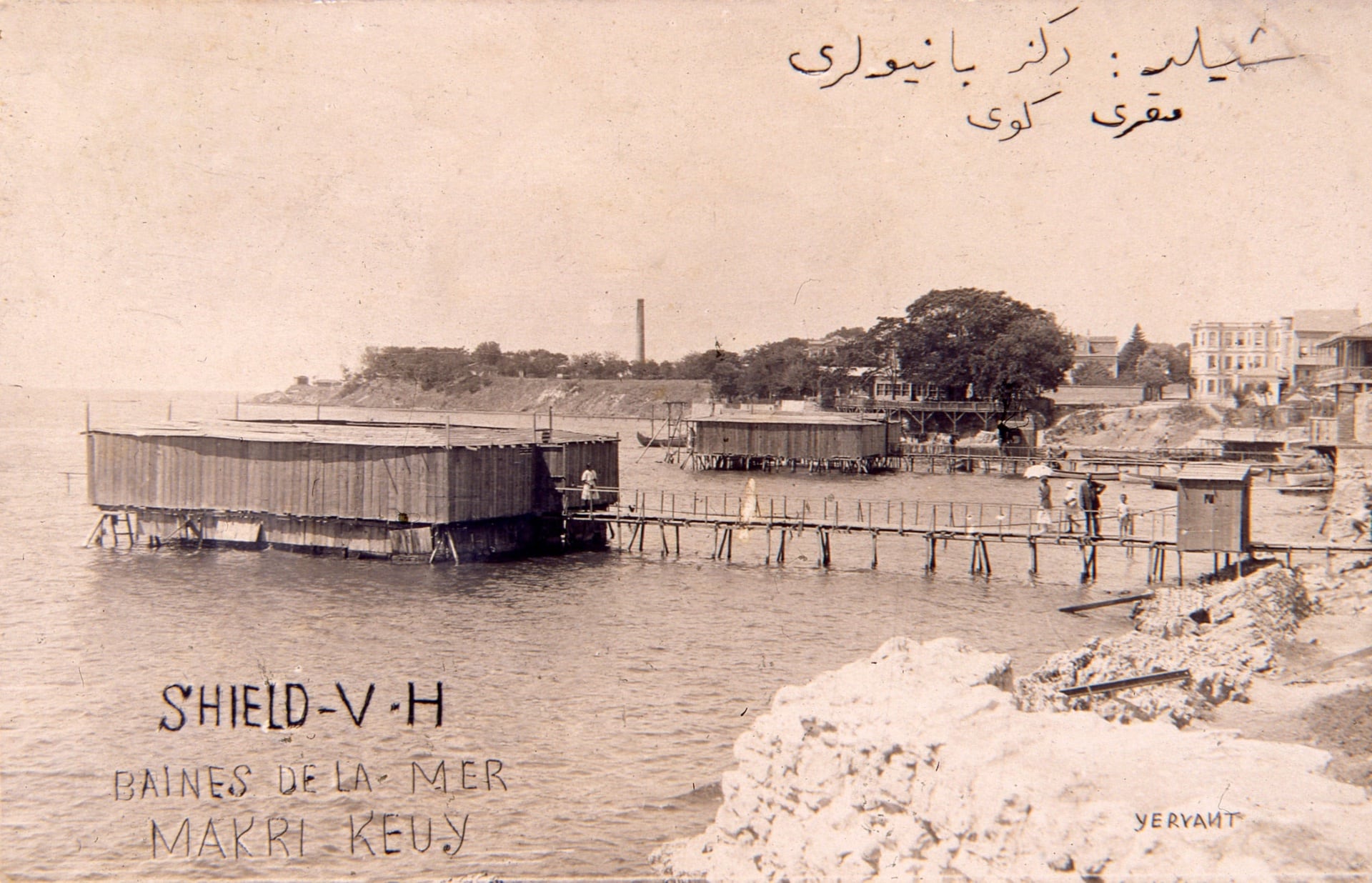08 April 2018

It is understood from Evliya Çelebi’s well-known Book of Travels that the history of sea baths goes as far back as the 17th century; their acceptance and popularization take place in mid-19th century as a result of Westernization, among other things. Sea baths, were structures built over the sea on water-resistant wooden poles, and each was a separate unit surrounded by wooden walls. These units, which seemed like closed boxes from the outside, were connected to the land by platform-bridges, also on wooden poles. Although differing from each other, sea baths were divided into two groups: Public and private. Private sea baths usually belonged to seaside mansions, which they were usually adjacent to. Public sea baths were larger, seasonal constructions. Sea baths were used separately by women and men, and were highly-monitored areas. Strict codes regulated their construction, and people’s conduct inside them.

They were built upon special permission. Since sea baths were based on the idea of sea bathing rather than swimming, visitors were not required to know how to swim. Whereas they were not unique to Istanbul; sea baths continued to exist until recently, as important elements in the city’s shoreline. It was possible to talk about the existence of sea baths even in the 1970s, albeit in fewer numbers. However, starting with the 1920s, beach culture and new beaches replaced sea baths, and the sea bathing culture.
Curated by Zafer Toprak Istanbul’s Seaside Leisure: Nostalgia from Sea Baths to Beaches exhibition took place at Pera Museum and İstanbul Research Institute between 05 April - 26 August 2018.

Istanbul’s Seaside Leisure: Nostalgia from Sea Baths to Beaches exhibition brought together photographs, magazines, comics, objects, and books from various private and institutional collections, and told a nostalgic story while also addressing the change and socialization of the norms of how Istanbulites used their free time. Istanbul’s Seaside Leisure was a documentary testament of the radical transformations in the Republic’s lifestyle.
Tuesday - Saturday 10:00 - 19:00
Friday 10:00 - 22:00
Sunday 12:00 - 18:00
The museum is closed on Mondays.
On Wednesdays, the students can
visit the museum free of admission.
Full ticket: 300 TL
Discounted: 150 TL
Groups: 200 TL (minimum 10 people)